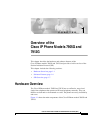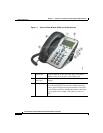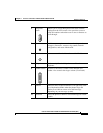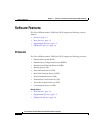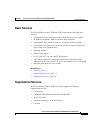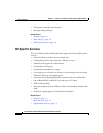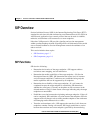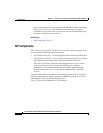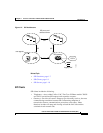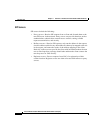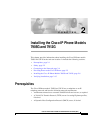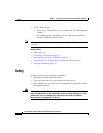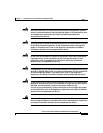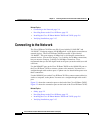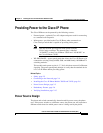
Chapter 1 Overview of the Cisco IP Phone Models 7905G and 7912G
SIP Overview
1-8
Cisco IP Phone Models 7905G and 7912G Administrator Guide (SIP)
OL-4277-01
party) and terminates the session between the transferee and the transferring
party. At the end of a call, SIP terminates sessions between all parties.
Conferences can consist of two or more users and can be established using
multicast or multiple unicast sessions.
Related Topic
• SIP Components, page 1-8
SIP Components
SIP is a peer-to-peer protocol. The peers in a session are called user agents (UAs).
A user agent can function in either of two roles:
• User-agent client (UAC)—A client application that initiates the SIP request.
• User-agent server (UAS)—A server application that contacts the user when a
SIP request is received and returns a response on behalf of the user.
SIP servers can interact with other back-end application services such as
Lightweight Directory Access Protocol (LDAP) servers, database
applications, and extensible markup language (XML) applications that
provide back-end services such as directory, authentication, and billing
services.
Typically, a SIP endpoint is capable of functioning as either UAC or UAS (but
not both simultaneously) during a transaction. Whether it functions as UAC or
UAS depends on the UA that initiated the request.
Figure 1-2 shows the architecture of a SIP network.




